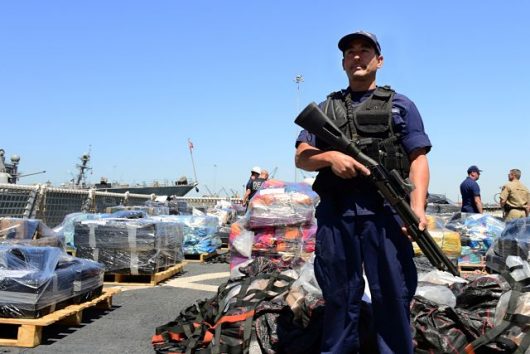Initiatives Against Drug Cartels in Latin America


Juan Manuel Santos, Colombia’s president, says that a global problem requires a global solution. One problem in need of a solution for more than 40 years is drug cartels in Latin America.
The Problem of Drug Cartels in Latin America
Because of drug cartels in Latin America, especially around South America, thousands have been killed in Colombia, Mexico and other areas where cartels are deep-rooted in society. Santos is urging countries to rethink their strategies because the human cost is too high, despite current efforts. The drug business also hurts consumers and the environment as land is deforested in order to plant cocoa, which supplies cocaine.
The largest drug cartels in Mexico — the Zetas and Sinaloa cartels — control most illegal drug trades from South America to the U.S. Usually, cocaine is imported from South America then smuggled to the U.S. Some groups also traffic marijuana and methamphetamines. Cartels are also involved with extorting local businesses, kidnapping for ransom, prostitution rings, intimidation and murder.
There is a shared responsibility among the international community to reduce both supply and demand for drugs. Some substantial initiatives have been employed to combat drug cartels in Latin America by Mexico, Guatemala and the European Union.
Cutting Drug Demand with Social Programs
Pena Nieto, the President of Mexico, promised in 2013 that $9.2 billion would be invested in social programs to alleviate crime by tackling its root causes, instead of following a policy of force. These initiatives consist of improving health and social services, roads, parks, lighting, and job opportunities for mothers. School hours also increased in an effort to keep the youth occupied and away from gang activity.
Waging War on Drugs
Mexico’s army has been deployed to arrest members of cartel kingpins. The Institutional Revolutionary Party is the ruling party, headed by Pena Nieto, and has rebranded itself into a modern force focusing on economic growth, poverty reduction and tackling drug-related violence. Under the current governance, crime and violence are usually dealt with at a local level. Exceptional cases include the severe violence occurring in Michoacán, where the President resorted to sending troops to back up the federal police forces. Vigilante groups are allowed to keep their own weapons when they agree to integrate into the official security forces.
Decriminalizing Drugs
Otto Pérez Molina, Guatemala’s president, proposed the method of regional decriminalization on growing drug trades. This effort could slim down profits obtained by the cartels from illegal drug trades in the black market, therefore crippling the drug business for brutal cartels.
Colombia adopted a similar approach by switching from the usual hard-line policies to the softer decriminalization method. Colombia hosted the 2012 Cartagena Summit of the Americas, which focused on decriminalizing drugs and expanded coordination between countries in combating drug calamity.
International Cooperation on Crime
Crimjust, a joint initiative implemented by the U.N. Office on Drugs and Crime, is funded by the European Union. It was established to counter organized crime and drug trafficking through international cooperation. In 2016, Central American and South American countries like Panama and Colombia became one of the first few countries to join Crimjust in order to enhance their own national capacities to counter drug and illicit trafficking. The 2016-2020 program is expected to specifically strengthen investigations and criminal justice cooperation along the cocaine route in Latin America, the Caribbean and West Africa. Through Crimjust, the international efficacy in combating drug cartels in Latin America has been amplified.
– Heulwen Leung
Photo: Google
